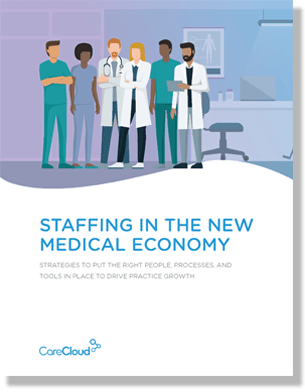Rural physicians face a set of challenges different from their urban-based counterparts. Issues like lower-income patient bases, glaring physician and registered nurse shortages and geographically disconnected patients all contribute to the difficulty of practicing in a rural setting.
Unfortunately, their distinct needs are often overlooked when discussing the impact health technology has on physician practices. Most pundits instead focus on practices under a broad umbrella.
Below we give you tips to rectify this by exploring how health technology can help rural physicians with the three aforementioned issues.
Higher Profit Margins
According to the 2012 U.S. Census, the median income for households inside metropolitan statistical areas is $52,988, compared to $41,198 for households outside of metropolitan areas. The lower income of rural patient bases means rural physicians often treat more Medicaid patients than urban doctors.
Seeing how Medicaid typically reimburses only 56% of what private insurers pay out, rural physicians need to secure maximum reimbursements from each patient.
EHRs help in this regard by letting doctors record every aspect of the patient visit. More extensive documentation reduces the occurrence of wrongfully “down coded” claims, which adversely affect profitability.
Practice management (PM) software also helps ensure full reimbursement with features like code scrubbing, rule-based intelligence and patient eligibility checks.
Making Up for the Physician/RN Shortage
While 19% of the nation’s population lives in rural areas, only 11% of the nation’s physicians practice in these communities, meaning they’re feeling the premature effects of the prognosticated physician shortage of 2020. There is a rural shortage of RNs as well, but they’re nowhere near as severe.
In terms of reduced competition, the shortage is a good thing, but it’s not beneficial for rural physicians who’d like to bring another physician or RN on board for help. Therefore, rural physicians should use health technology to spread themselves out as efficiently as much as possible, without risking physician fatigue.
Thankfully, EHRs streamline operations by allowing physicians to chart rapidly during the patient encounter, and ePrescribing functionality reduces prescription writing to a few clicks of the mouse. In addition, PM systems, streamline patient flows to get patients through the office quicker.
Reaching Remote Patients
Rural communities aren’t as centralized as urban settlements so patients may have to travel into an entirely other towns to reach the nearest physician.
Patient portals come in handy when dealing with geographically distant patients. Rural patients can access lab results electronically through the portal rather than making oft-long voyages to their primary care providers. Some portals also have secure messaging capabilities, so patients can communicate directly with their physicians online.
Telemedicine is another health technology that helps physicians overcome the challenge of dealing with distant patients. It involves using voice conferencing and streaming media to provide long-distance patient care, a development that has prompted companies like Skype to boost security settings. The costs of telemedicine can be less than the cost of actually seeing a patient in the office.
Adopting health technology can help rural physicians reduce some of the problems they encounter on a daily basis. As hospitals and large healthcare organizations become more pervasive, it may be the key to the future viability of rural physicians.
Looking for more information about how health technology can help your practice? Sign up for our email list below.


